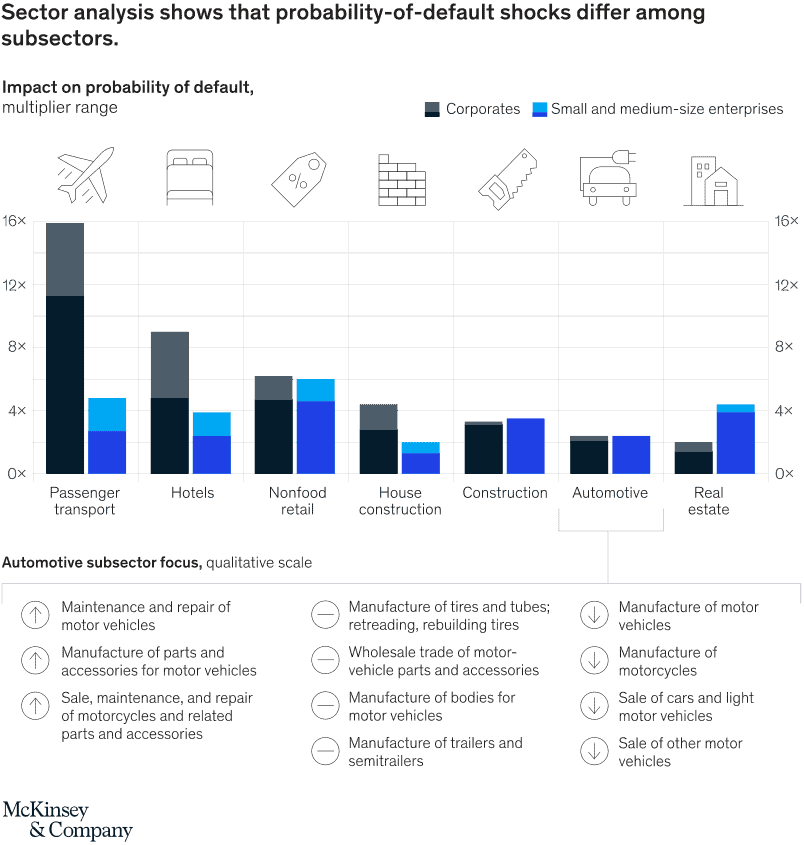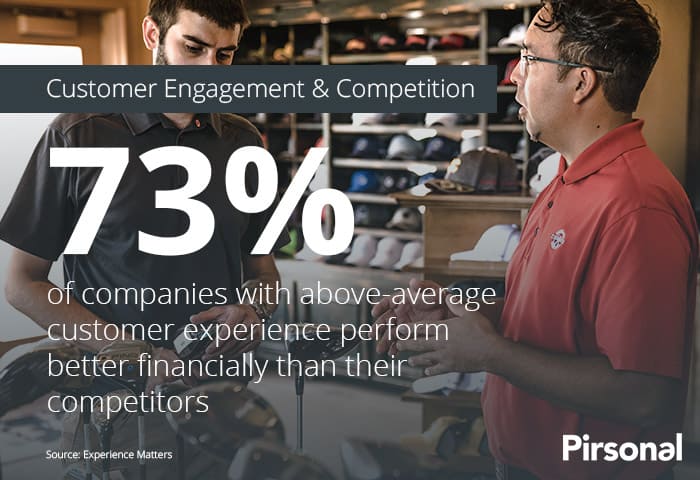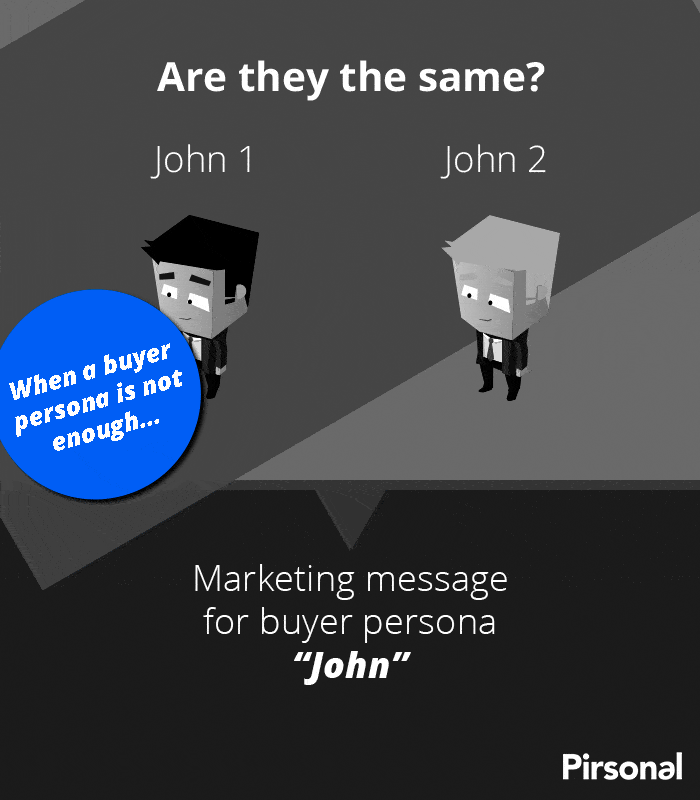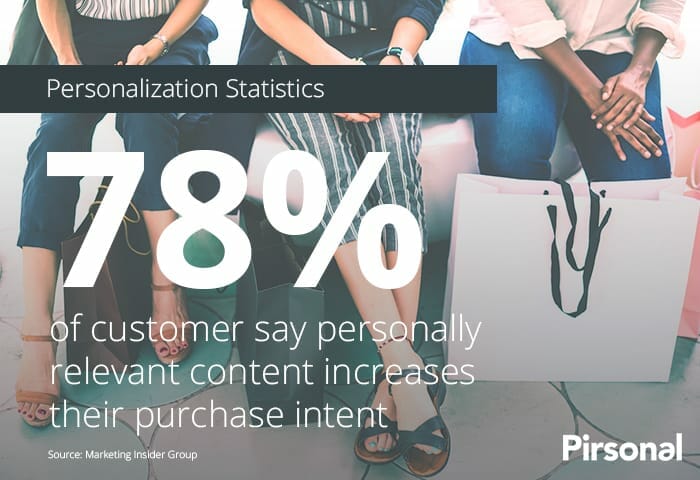Do you like desserts? I love them. Even If I’m the kind of person that mixes sweet and salty food all the time, I usually leave dessert to the end.
Also, when someone tells me “I have good and bad news, what do you want to hear first?”, I usually want to hear the bad news first.
Talking about how to drive customer engagement in uncertain times requires to start with the bad news first.
Let me explain why.
History has proven that there are things we cannot predict. Let me give an example.
How Any Crisis Forces Organizations To Double Engagement Efforts
Because of the coronavirus pandemic, millions of employees have lost their jobs and cannot pay their credit cards.
This also means that organizations, big or small, are making a lot of changes in their cost structure in order to survive. Sadly, many organizations also need to shut down.
For example, COVID-19 has caused an unprecedented crisis for the tourism industry. International tourist arrivals are projected to decline by 60-80 percent in 2020.
This means that it could take at least four years for tourism spending to return to pre-crisis levels until 2024. I’m talking about as many as 120 million jobs at risk.
Customers who work for businesses heavily involved in international trade have felt the impact most directly. They lost bonuses, incentives, part of their salary, or jobs.

Crises like the current one affect big and small organizations. It has probably affected yours. Do these companies have great products and services? For sure.
They had people paying for them too. And that’s the thing. They had people. Businesses are not about selling products and services. Businesses are about serving people. Individuals like you and I have needs, desires, and objections.
This is why today my goal is to help you understand why this new situation is an opportunity and how to redefine your customer engagement strategy during and after a crisis.
Customer Engagement In Uncertain Times
Here is the challenge. Pre-crisis, organizations were in what I call the engagement battle or even war. Customer engagement wasn’t really a priority for most of them. People were buying, anyway.
But even then, some companies become known because of their client servicing approach.
From Amazon to Dell, or even local stores, excellent service to customers was already part of these organizations’ DNA.
But here is the reality… The way organizations work with clients is changing.
Whatever your organization was doing in order to engage with customers is probably not enough anymore. Maybe it doesn’t even work anymore.
People change.
Customer relationship demands a proactive organizational attitude. It needs to be a core part of what your organization is and fights for.
And, because of this, more than ever, now is the time to double, triple, and quadruple your customer engagement efforts. With the current pandemic, companies are starting to understand that customers no longer base their loyalty on price or product only.
Clients stay loyal to companies because of the experience they receive.
This is shaping a new wave of customer management best practices, technologies, and software companies that emphasize a customer-to-company correspondence.

This client experience translates into customer engagement.
When customers are going through difficult times, this engagement translates into customers that stay with you. They stay loyal even if they are not paying for your service anymore.
82% of companies agree that retention is cheaper than acquisition. Even better, revenues for businesses that prioritize customer service rise 4-8% above their market.
Bear in mind that your customers don’t pay anymore not because they don’t want your offering anymore but simply because they can’t afford it at this specific stage of life.
Not having the budget doesn’t mean not having expectations. Quite the opposite. If you cannot keep up with their increasing expectations and particular context, your customers will leave you for good.
Crises Are A Customer Engagement Opportunity – Don’t Miss It
Customer Experience Overtakes Price But…
Econsultancy and Adobe conducted an Annual Digital Trends report for 2020. Obviously, things have gone south… But even so, the data will serve as a reference and will further detonate the importance of customer experience and customer engagement have.
They asked B2B companies to state the single most exciting opportunity for 2020.
Guess what came first?
Customer experience (or CX) did. It even beat content marketing, video marketing, and social. In fact, a Walker study found that by the end of 2020, the satisfaction of customers will overtake price and product as the key brand differentiator.
Things have changed because of the current global situation.
The price will probably be more relevant than what it already was.
However, experience, the very history, and what we are seeing tells us that customer engagement is playing a key role in customer retention.
Again, even if “retention” means that your customer’s account, subscription, or service in hold for now, while things get a bit better. Attending to customers’ needs makes a difference in terms of long-term retention.
What Customers Demand
Did you know that 54% of the customers think companies need to fundamentally transform how they engage? That customer engagement stat is no joke. It represents a great opportunity for your organization to start with customer engagement in a serious fashion today.
Why is this important in regards to your customer engagement in uncertain times?
We are humans.
64% of customers expect tailored engagements that are based on past interactions. This means that context is key. It also means that customers take into account what you have done for them in order to keep the conversation alive. Your customers expect your brand to understand what they want before they ask.
4 Ways To Revamp Your Customer Engagement Game
How can you improve your customer engagement strategy? Let me share with you four ways to refresh how you work with your clients.
Get To Know Your Customer Again
The person behind that email address, shipping address, or first name has changed. Now it’s time to re-invest time, effort, and resources in getting to know each one of your customers again.
Among other things, this will help you understand if your marketing messages are aligned with what they need and to your organization’s expectations.
It will also help you understand if your products and services are still relevant to their needs and to the target market.
Renewed Buyer Persona
If you already use buyer personas for your marketing, sales, and product development, it’s time to create new ones as a first step. As a reminder, a buyer persona is a fictional character created to represent a user type that might use your product or service but also is the person that will consume your marketing messages. Buyer personas are a fictionalized characterization of your best customer based on information about them.

DemandGen reported that Thomson Reuter saw a 175% increase in revenue attributed to the use of marketing buyer personas and a 72% reduction in lead conversion time. Here you have an article where I explain why defining your buyer personas is a vital part of any personalized video strategy.
If you have already created or updated buyer personas, it’s time to go the extra mile and think about what I call augmented buyer personas.
Basing our marketing messages solely on buyer personas limits your game and the potential of your strategy.
Creating buyer personas is a common practice. It helps you materialize how your customers might be based on your experience with other customers with similar characteristics.
This is a lot better than your best guess or a marketing briefing talking about the target audience.
One More Step: Augmented Buyer Persona
An augmented buyer persona is the profile of an individual comprised by all the interrelated information gathered about that individual provided by one or many data sources and the individual’s buyer persona, taking into consideration the individual’s particular context to create products, services and, most commonly, marketing messages that fit the individual’s needs, objections, desires, and interests, aligned with the objectives set by the organization.

The buyer persona is required to design the general marketing collateral, assets, and more, and the augmented buyer persona is used to create specific messages and media assets depending on the specific characteristics of a person thanks to all the interrelated and gathered information about that individual.
Customer Engagement Empowered By Personalized Marketing
Personalized marketing becomes a key piece of your customer engagement in uncertain times. Personalized marketing is about putting your customer into context. Into their context, in relation to yours.
Personalized marketing has become a top priority for customer experience or CX leaders as organizations invest more and more in marketing processes that adapt to the individual and that scale.
Your customers expect easy, valuable experiences. The customer journey happens in real-time. This is, putting your customer data at the center of your marketing strategy.
As you can see, here is where personalization shines. Here is when you can deliver experiences in real-time that are matched to each customer’s context. This also represents an opportunity for your business.

Want to know why?
According to Adobe, only 38% of organizations have the infrastructure in place to manage personalization strategies. Even fewer companies have a strategy in place.
In fact, one of the main reasons why organizations from different industries use personalized videos for their marketing is because they want to improve customer engagement.
This is what we see through Pirsonal’s personalized video marketing software. Make sure to check these examples of personalized videos to find some inspiration.
Customer Segmentation To Increase Engagement
Through customer segmentation, organizations can divide their core audience into sub-groups of consumers based on some type of shared characteristics.
In the following video, I explain seven really ways to segment your customers to create marketing messages that are aligned to their needs.
In the same fashion, segmentation and micro-segmentation are game-changers.
Through micro-segmentation, brands get granular. However, before reaching hyper-segmentation, you must go through customer segmentation. In the majority of cases, companies do a basic level of customer segmentation.
But there is so much more than you can do with the right customer segmentation in place. A conversation is the easiest way to understand how powerful customer segmentation is.
By definition, a conversation is a talk between two or more people. There is an exchange. A conversation is reciprocal. There are always at least two parties involved.
When we talk about customer engagement, you have to take into account that reciprocity. This is how personalization becomes your customer engagement engine.
Take a look at this interview with Hugo Hamel, CMO at Enrich3, where he talks about the differences between segmentation and micro-segmentation:
Getting Ahead Of Your Customer’s Problems
Customer engagement in uncertain times requires an accelerated approach to your customer’s problems. “In the consumer world of social platforms, every single person has a voice.
The rewards of harnessing your most ardent fans are amazing, but customers will also be very vocal when they are displeased.
So knowing your customers and understanding their needs has become critical to success, no matter what industry you’re in.” Said Neeracha Taychakhoonavudh, EVP of Industries at Salesforce.
You cannot function your business without making your customers happy, even if they are not paying for your service anymore.
In uncertain times your business needs to constantly show initiative. Each and every one of your customers has problems. We all do.
Find out which problems are aligned to your core vision and mission and offer solutions that make them happy.
Customer Engagement For Premium Results: Stats To Help You Decide
According to Gallup, customers who are fully engaged represent a 23% premium in terms of share of wallet, profitability, revenue, and relationship growth over the average customer. They shared a few inspiring customer engagement stats:
- Retail banking customers who are fully engaged bring 37% more annual revenue to their primary bank than actively disengaged customers.
- Consumer electronics shoppers who are fully engaged spend 29% more per shopping trip than actively disengaged customers.
- Hotel guests who are fully engaged spend 46% more per year than actively disengaged guests.
- Companies that successfully engage their B2B customers got 63% lower customer attrition, 55% higher share of wallet, and 50% higher productivity.
But, guess what? This is not what you are looking for right now. We are focusing on keeping them happy, happy with your brand, values, and offers.
Conclusion
There is something that I am 100% sure of. I have no doubt about it. Even worse crises will come. Is your organization ready for a customer engagement that contributes to the happiness of your customers?
For any company, customer engagement should be a dead-end in one direction. Once you enter, you must focus on improving, improving, and improving. Customer engagement in uncertain times requires speed but also thinking about the future.
Industry data shows that investing in customer engagement is an opportunity not to be overlooked. Likewise, it shows that in good times, companies that invest in customer engagement do very well.
Crossing data and experience, we see that in the same way, customer engagement becomes a key tool to improve customer retention.
Perhaps this is not the time to focus on an accelerated increase in sales. But of course, customer retention. Because in the same way that crises come, business models and services can adapt to better serve the changing needs of each customer.

